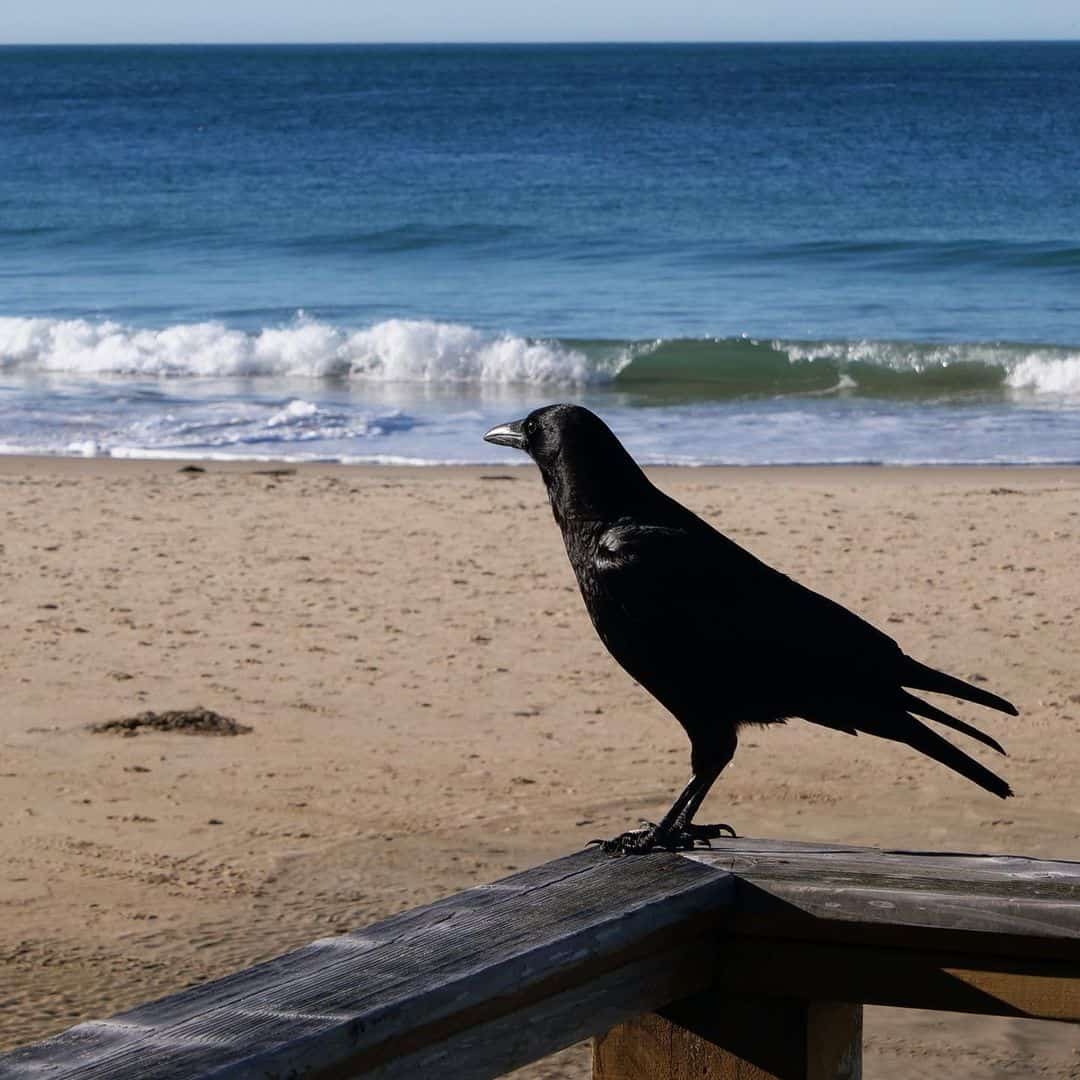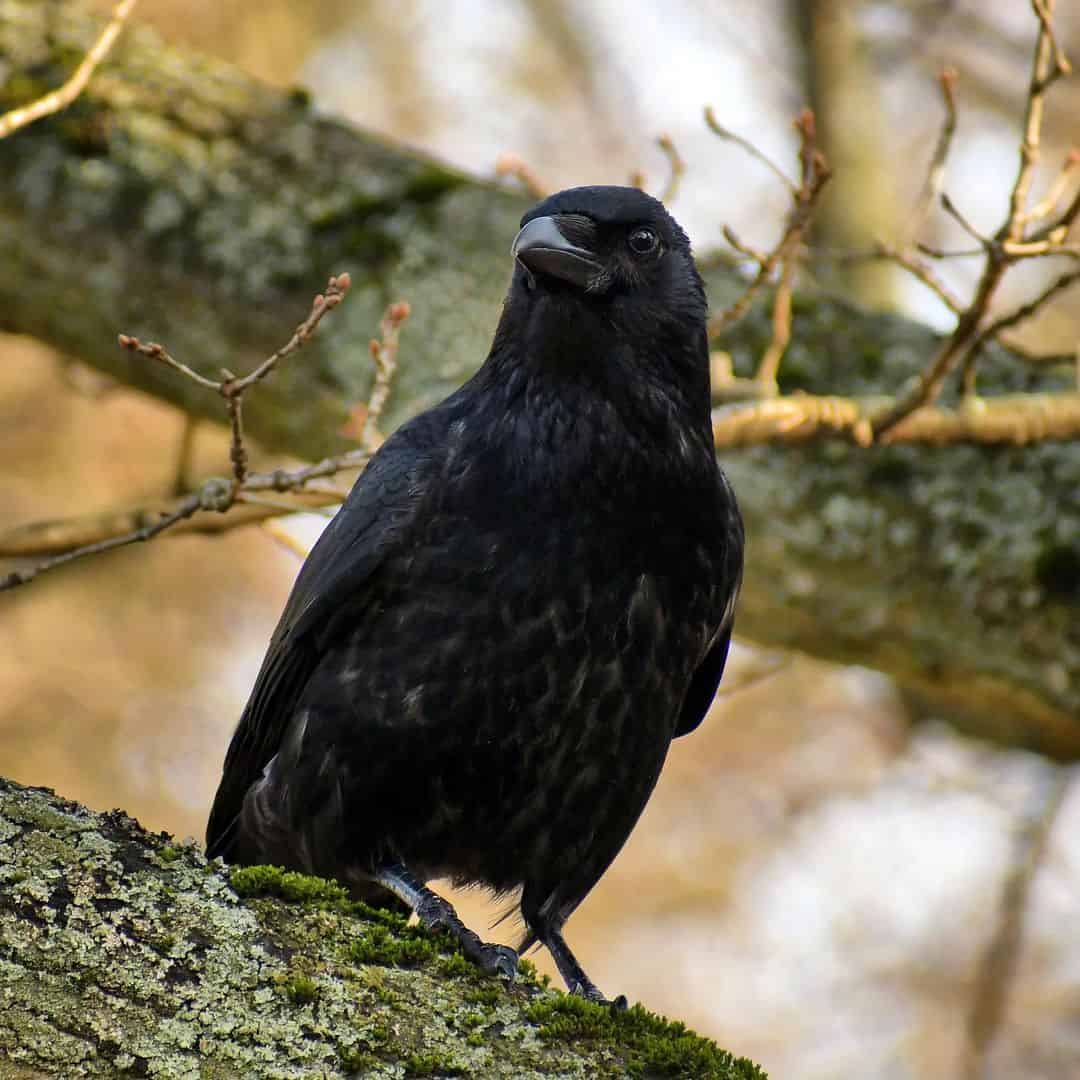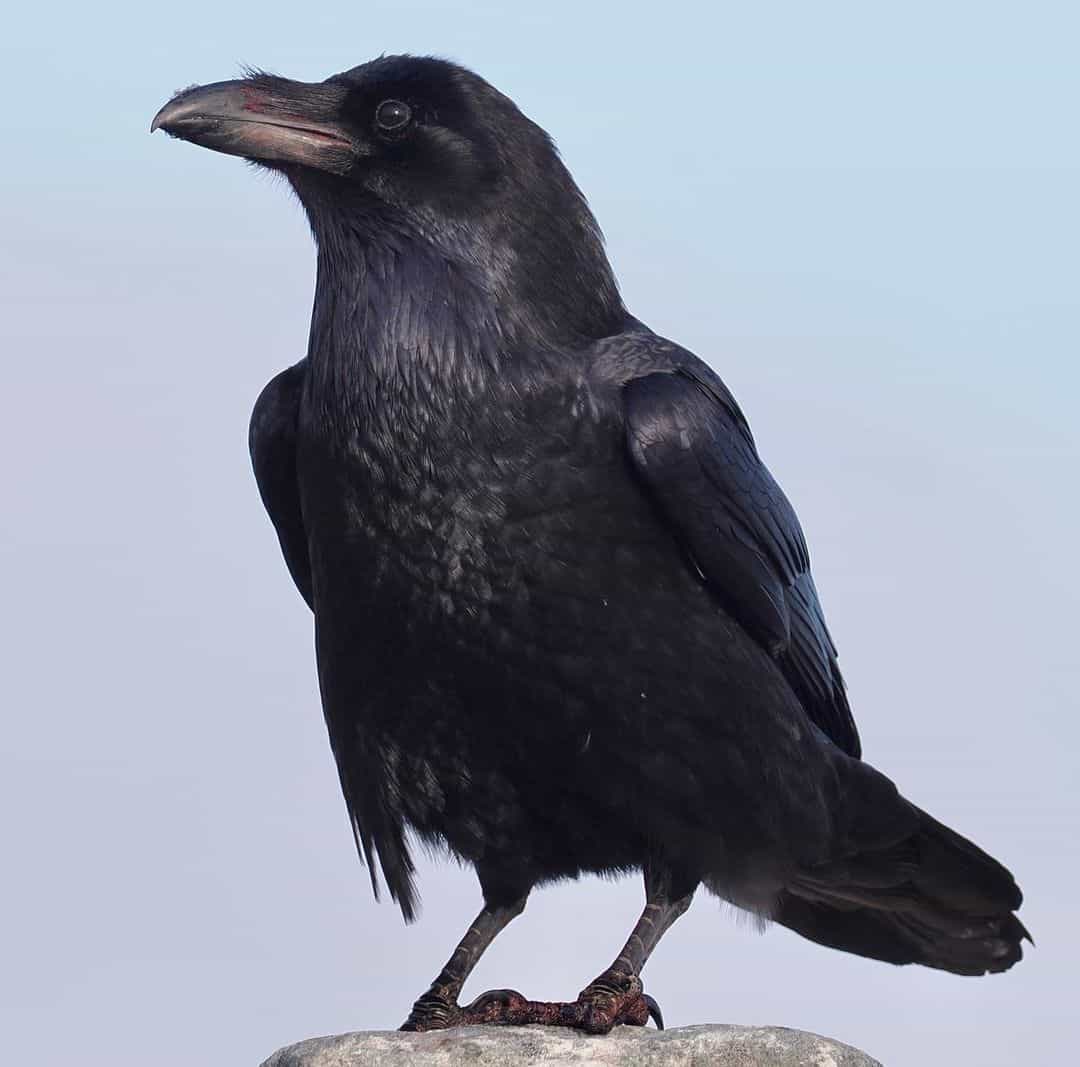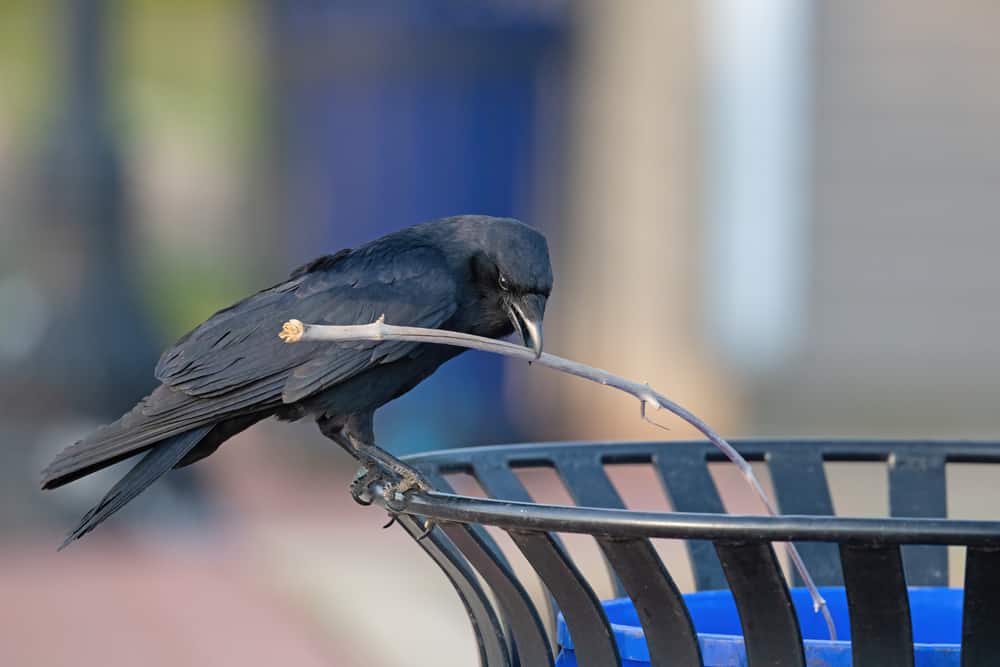It is very easy to confuse ravens and crows because they are both all black birds. However, since they are two different species, there are some distinguishing features to look out for. So what are the features that help you identify a crow from a raven?
In this article, we explain how you can tell the two birds, both from the Genus Corvus family, apart. Read on to learn how you use a range of identifiers to distinguish a raven from a crow including how they fly, what they sound like, and where you are most likely to spot them.
Crows And Ravens
Crows
Crows which can be found in many parts of the world have glossy black plumage. They are intelligent birds and you can teach them to count up to the number seven. Crows have been known to memorize up to 50 complete sentences and 100 individual words.
The species, which include the carrion and American crow, can mimic voices. For example, they can copy their owner’s voice. Crows are known to be attracted to shiny objects and steal unattended items.
Ravens
Ravens are also all black, but they are bigger than crows. These passerines, or perching birds, are found across most of the Northern Hemisphere. Raven is a very hardy bird species and can survive in boreal forests, barren mountains, and the northern tundra.
Ravens have been linked to superstitions about death and associated with pestilence, in particular the bubonic plague. However, ravens are clever and fearless birds with keen eyesight and excellent flying skills.

capturedbycole
What Difference to Look Out For?
So far, the two birds sound quite similar. Both are fully black, intelligent perching birds. So what are the details that can help you tell these two birds apart? Below, we have detailed the different features that separate crows from ravens.
1. Their Size
One of the easiest ways to tell the two bird species apart is by their size. Knowing that a raven is bigger than a crow can help you quickly tell them apart if you see them at the same time. When you see them separately, you can estimate their size and compare them to the average measurements for each bird.
Ravens at about 26 inches (or 66 cm) are comparable to the red-tailed hawks. They weigh between 1.5 and 3.5 pounds (around 700 to 1,600 grams). A crow, on the other hand, is about 20 inches (50 cm) and weighs between 11 and 20 (between 300 and 600 grams). Ravens have a wingspan of 3.5 to 4 feet and crows approximately 2.5 feet.
2. How They Fly
When you see a fully black bird in the air and want to know whether it is a raven or a crow, watch how it flies. Ravens are very acrobatic fliers and you can often spot them performing somersaults and loops. You can also often see them fold their wings and drop down upside-down.
When there is more than one raven, you might catch them interlocking their talons in mid-flight. Although they occasionally dive in unison, you are more likely to see ravens dive one after the other.
Crows are not as acrobatic in the sky. They flap their wings more rather than catch and ride the thermals as ravens do. They also do not dive. Crows are quieter fliers. You generally cannot hear their wing beat, but you can hear a prominent swishing sound when a raven flies over your head.
3. The Tail Details
Another way to differentiate between the two species is to look at the shape of their tails. The tips of a crow’s tail feathers are squared off. This feature makes the tail look like a fan when the crow opens it in flight. The raven’s tail has slightly pointed tips on its tail feathers and they appear diamond or wedge-shaped.

lubikoku
4. Feathers and The Throat Area
Even though they are both black birds, there are different shades and one bird has shinier feathers than the other. A raven’s highly glossy feathers have an oily and wet sheen, while a crow’s feathers do not shine as much. Raven feathers have iridescent greens, purple, and blue shades, and crows have purple and blue shades.
You can also look at the feathers on the bird’s throat. Crows have smooth throat feathers compared to ravens, which have a well-developed ruff known as hackles on the throat area.
5. Beak and Neck
If you are close enough to the bird or can get a clearer look with binoculars, look at the bird’s black beak. Common ravens have beaks that are pointy and curvier, thicker, more cylindrical, and heavier than crows. Crows have more delicate beaks that are slimmer, straighter, and smaller.
The necks of the two species also have different appearances. When in flight, the raven’s neck is longer than the crow’s. It also looks thicker because of the fuzzy neck feathers that form the hackles.
6. Their Habitat
Ravens, found across the Northern Hemisphere apart from the Great Plains and the eastern forests, like to live in grasslands, forests, and sagebrushes. However, they are not that fussy and are also known to live on islands, deserts, mountains, the tundra, and ice floes among others. They are often found living in farm buildings or isolated houses.
The American crows prefer to live closer to human habitation and often put their nests up in urban areas. You often find them near open feeding areas, the edges of forests, golf courses, cities, and suburbs. They have spread to most American states apart from the southwest.

ullapoolsnapper
7. Their Sound
You can tell the birds apart by listening to the birds’ calls. Ravens have coarser voices than crows. A raven has a deep, slow, and hollow croak that can be best described as sounding like “wonk-wonk”, “tok”, or “crossk”. The crow’s call is more even in its pitch. They often repeat the call several times, which sounds like “caw caw” or “awk awk”.
The final thing to listen out for is whether the bird makes the sound alone. Ravens usually croak alone, while other crows are likely to join in when one starts making its cawing sound. While there are differences in their natural sounds, both birds can mimic sounds they hear around them, including clicks, knocks, and rattles.
8. Nesting and Roosting Behaviour
Because crows are defenseless during the night time, they roost in large flocks during the non-breeding season in coniferous and deciduous trees. They favor living close to human settlements, even large cities because there are fewer predators around. Ravens, in contrast, prefer roosting on large trees or cliff ledges.
Both raven parents share the responsibility of feeding and looking after the chicks. Crows are cooperative breeders. This means the offspring is looked after by the parents and other birds in the flock, too. This can help to ensure all chicks get enough to eat and are better protected from predators.
9. Migration
Observing their migratory patterns can help you distinguish between the species. The American crow is a partially migratory bird. This means that while some American crows migrate, others will not. Some migratory crows live in Central Canada during summers and travel south to the United States during winters. Ravens are not migratory birds.
10. How Long Do They Live
While knowing their lifespan will not help you tell one species from the other when you spot them out in nature, it is useful to know the life expectancy. Ravens live longer than crows. While ravens can live 10-15 years, crows live 7-8 years on average.
Similarities
Not only do the birds look the same there are also further similarities. Both species are opportunistic omnivores, meaning they are not fussy eaters and eat both plants and meat. They feed on berries, insects, and other birds’ eggs, and can attack and kill small animals. Both birds are scavengers and are known to search for food in the garbage.
Crows and ravens are both intelligent birds and can learn to recognize people’s faces. They use their intelligence to communicate with other birds from their flock and produce different sounds to warn and even cheer up others. Crows can produce around 250 sounds and ravens have twenty distinctive call patterns.
In the US, both species are protected by law, which means you cannot sell, purchase, possess, or export adult birds, their eggs, or nests unless you have a valid permit. This prevents people from keeping crows and ravens as pets.
Conclusion
While there are many similarities between the two birds from the same family, a careful observer will be able to tell them apart by taking a closer look and using the features described in this article.
If there is anything you want to ask us about ravens and crows, you can write your questions in the comments box.
